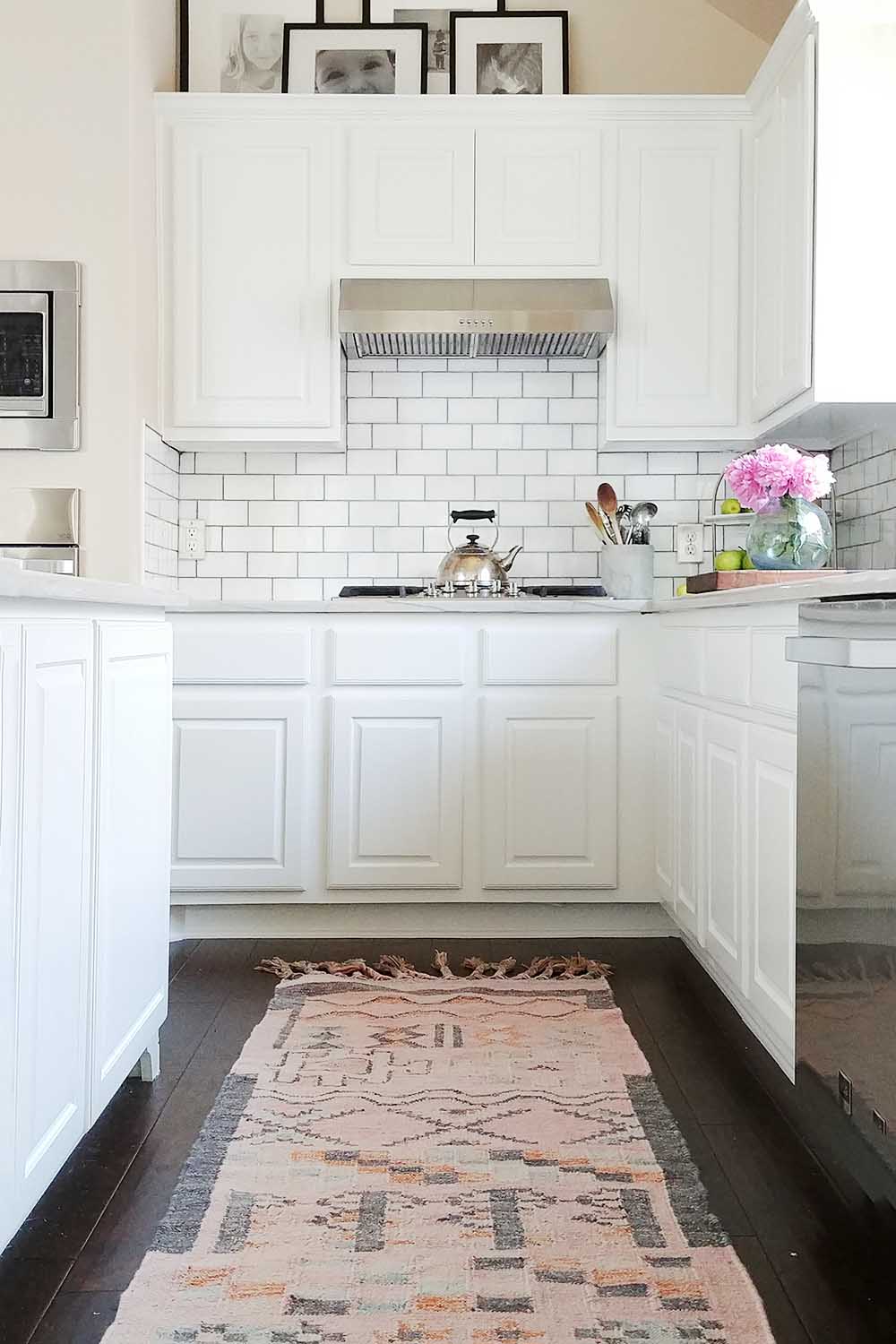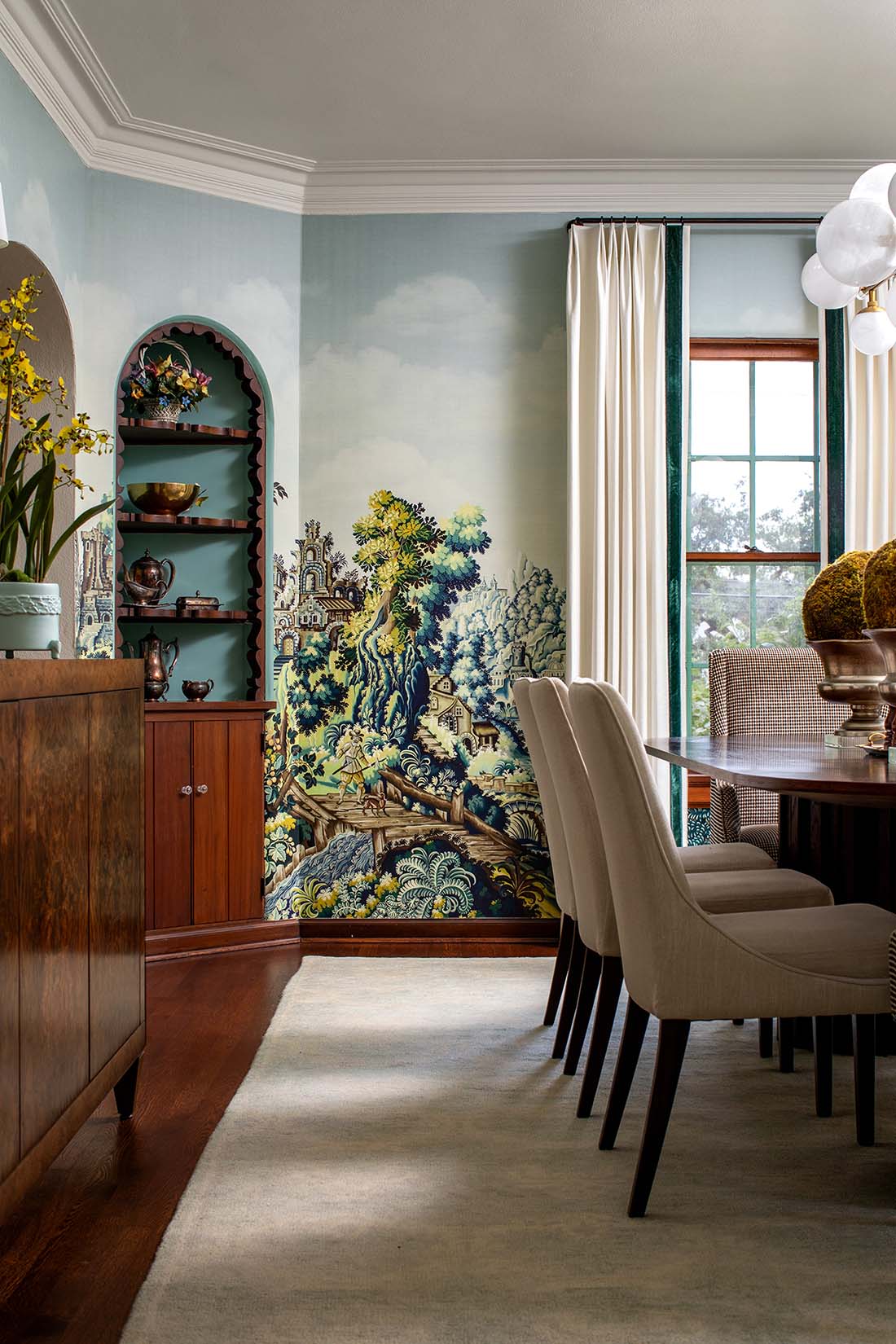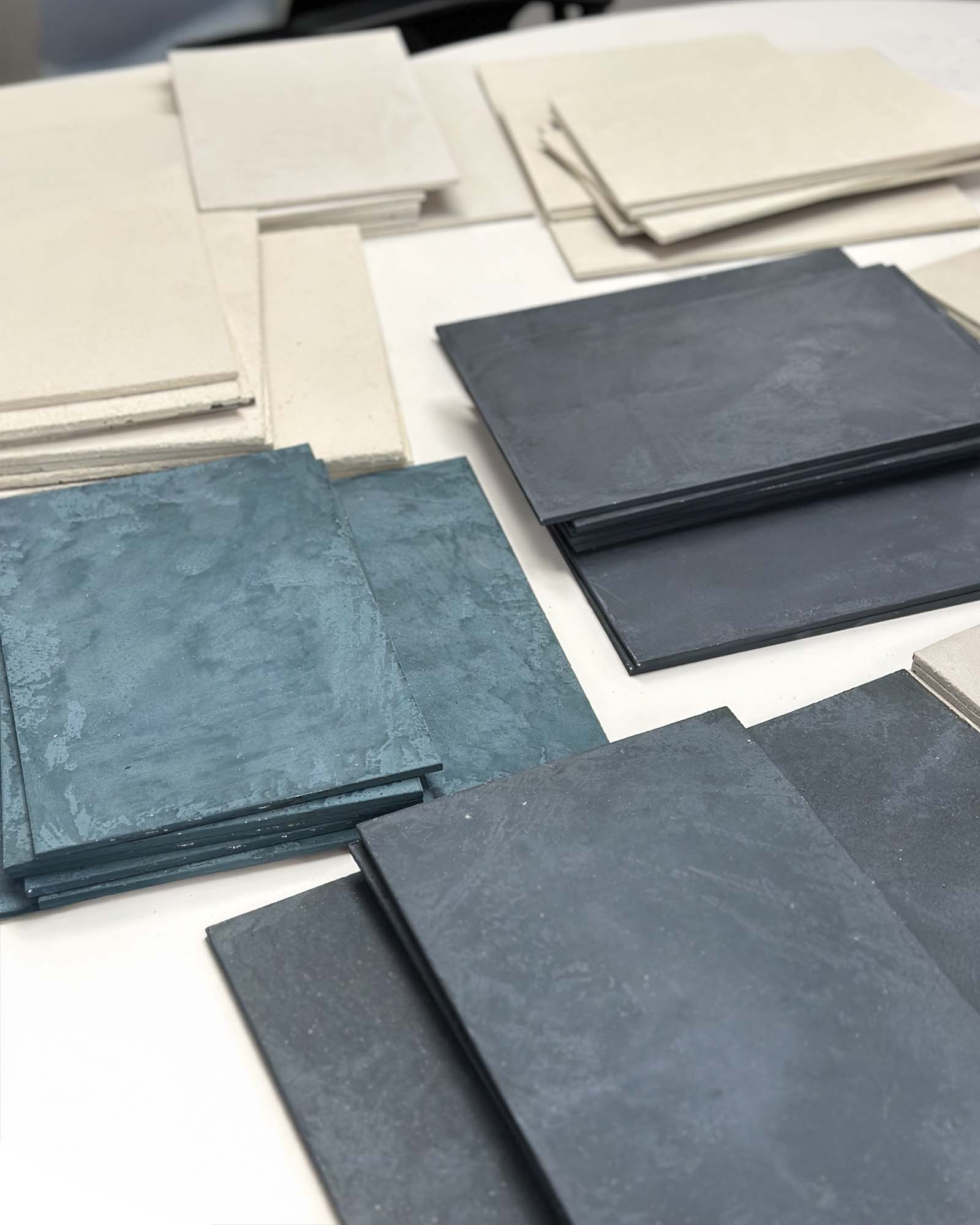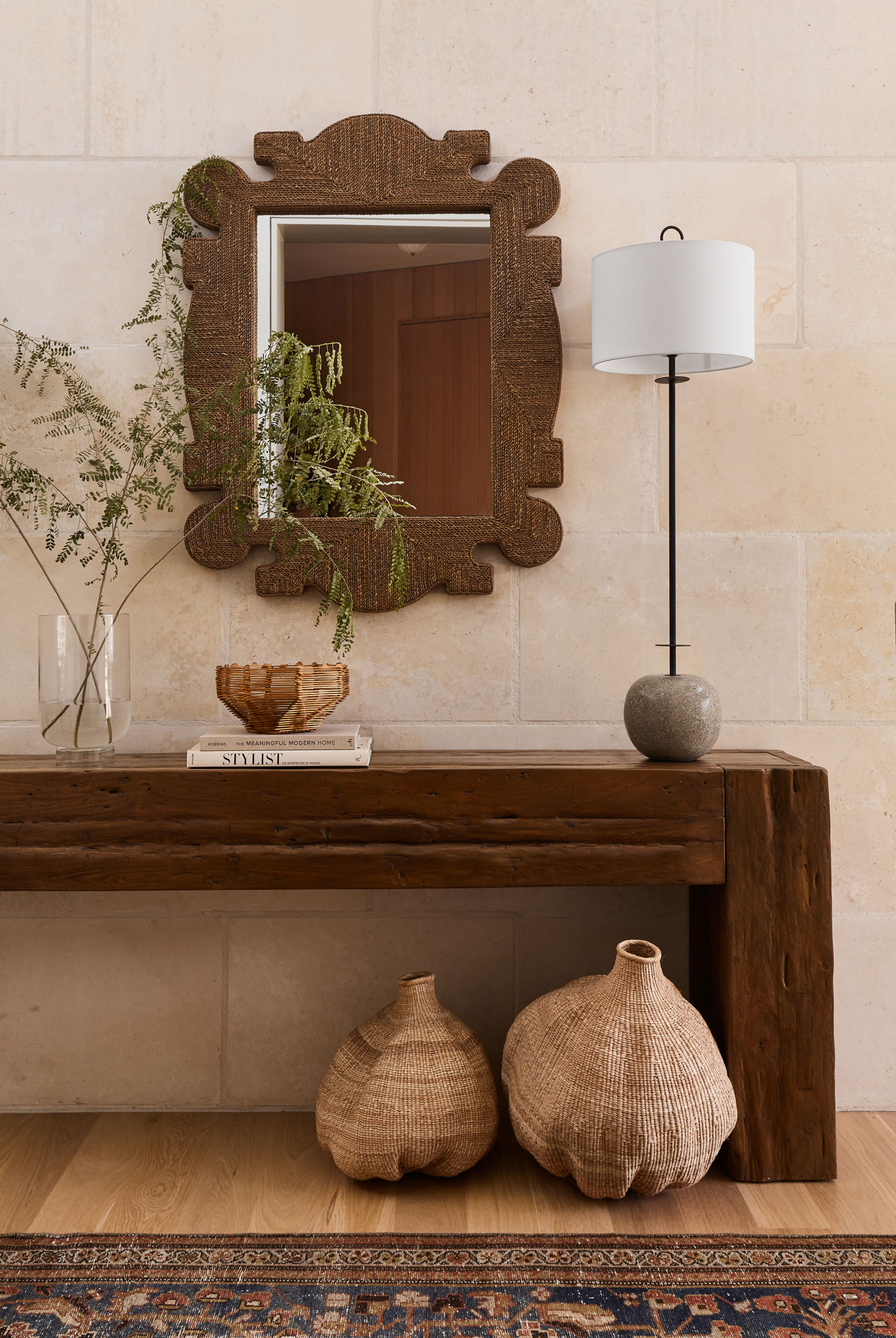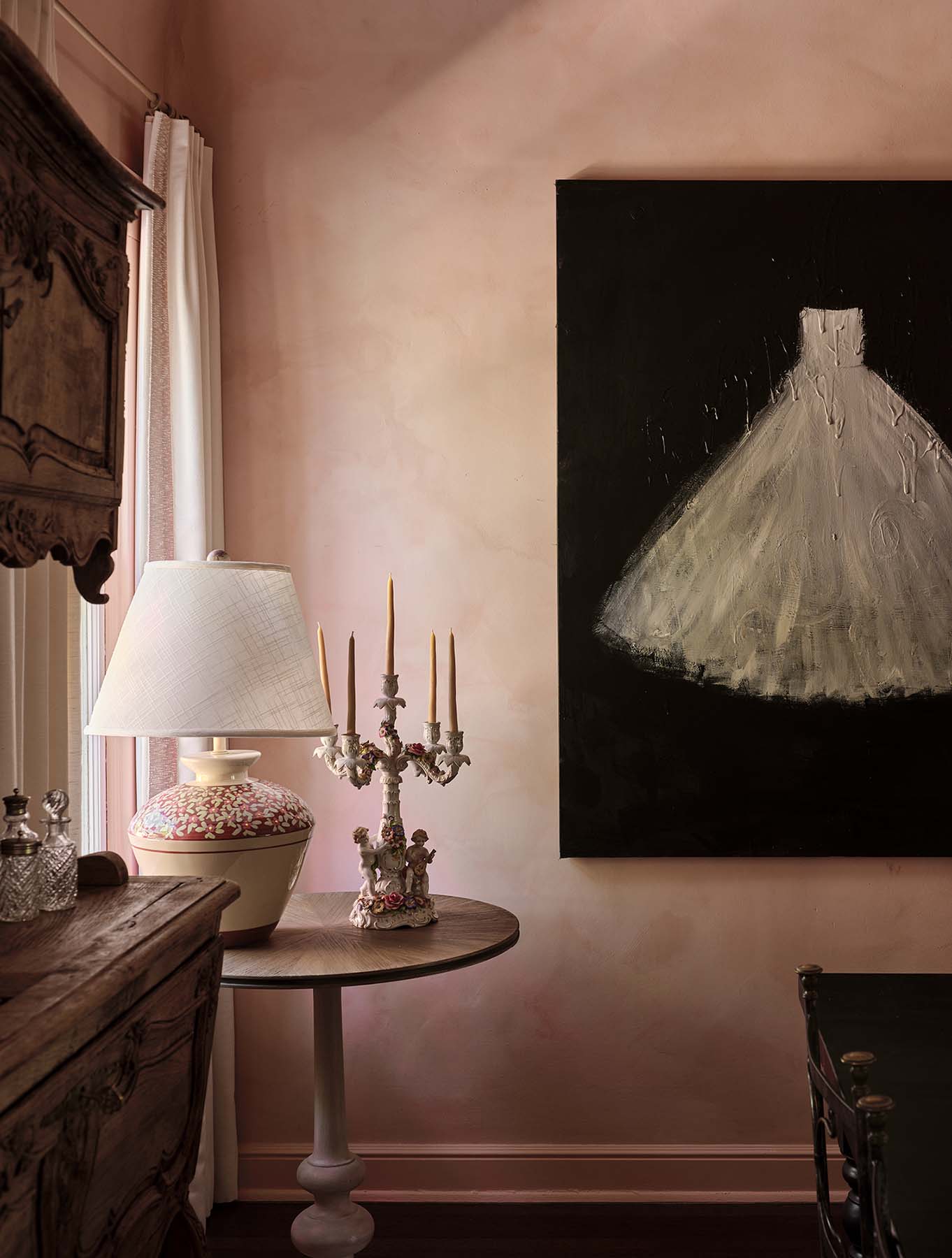As a lover and purveyor of interior design on a dime, I’ve wondered, “Should I paint my kitchen cabinets myself?” I’m always looking for inspiration and how-to’s on just about any interior design or home improvement topic, and I have to admit the amount of “Professional DIYers” I follow on Instagram is astronomical. The tufted headboards, the hanging planters, the macrame wall decor. . . at a fraction of the cost of West Elm? Sign me up! These wonderful people are truly doing God’s work. Making interior design accessible to those with a smaller budget is a virtuous feat. I, for one, am grateful for it.
In the internet age, if you can google it, you can DIY it! But. . . Should you?? I would credit Martha Stewart as the first successful DIY connoisseur, but even she wouldn’t attempt to, say, build a sofa. The mark of a successful DIY influencer is to know your own limits, and the limits of your audience. If you have ever attempted one of the far-fetched “life hacks” floating around on the Instagram “Explore” page, you know that crafty camera work doesn’t always translate to practical application. I bet everyone can say they’ve seen, or worse, tried something that simply doesn’t work! (Boiling eggs in the microwave? Face palm.)
If you’re not a seasoned DIYer, it can be difficult to spot what’s beyond reach, until you’re already too far in and too many dollars into the process.
You can Google “Should I paint my kitchen cabinets” and come up with all kinds of how-to’s geared to get clicks from DIYers everywhere. But as a manager for a painting contractor, I can’t tell you how many times I’ve been called to a home to estimate fixing kitchen cabinets that had been painted by a person who simply followed the steps from an Instagram post. It’s even worse if the info came from a DIY house flipper, who only cares about speed and turnaround time. (I’ve heard that failed home inspections are up 200% since this whole DIY home renovation “trend” caught on. I can easily believe it.) I have directly reached out to several DIY home flippers to tell them that skipping sanding and priming is a sin when it comes to painting kitchen cabinets, only to be shrugged off. These encounters leave me wanting to shout from the rooftops, DO NOT DIY YOUR KITCHEN CABINET PAINTING! (I know it’s rude to shout, but I feel that strongly about it!)
Can you DIY paint a wall? Yes, all day. Do it, in fact I encourage it. But please, for the love of all that is holy, do not attempt to paint your own kitchen cabinets.
You may have heard the phrase, “Be careful who you take advice from.” The same is true for the DIY community. Cue me, a person who loves DIY but who also works for a professional painting contractor. I can tell you the major red flags to look out for in that kitchen cabinet painting tutorial, and I’ll tell you how our professional painters do the job. Before I move on I will say this: preparation is 80% of it. Anyone who skips part of, or worse ALL, of the below steps is setting you up for failure, point blank.
First of all, it’s going to take a serious time commitment.
To paint your kitchen cabinets in a manner comparable to a professional paint job could require over two hours of time per cabinet door or drawer if you’re going to do it right, and several more hours for your base cabinets. (By the way, most kitchens have at least 50 cabinet doors and drawers, just to put this in perspective.) Our pro painters remove all doors and drawer fronts, they never paint cabinet pieces in place, that’s just asking for trouble (bad brushwork and paint ending up on your hinges, for starters). They also cover all surfaces not being painted with paper, plastic, and tape in preparation for the sprayed finish, and this step alone can suck up a full weekend if you’re not a pro.

And it takes real gear.
Our painters spray the paint finish with professional equipment, so the cabinet paint is never brushed or rolled, (brush marks and roller stipple, no thank you!). (If you want to see the full process, including video, we write about it here.)

It takes a 2-man crew of our professional painters (seasoned veteran painters who do hundreds of these projects a year) an average of 3-5 days to complete the entire process, longer for larger kitchens. Anyone who says you can paint your whole kitchen in one weekend by yourself is grossly misinformed or doing it wrong.
So lets get into the actual steps involved.
First, you have to thoroughly clean your cabinets, but this is the part most people skimp on. Grease and oils from cooking or washing dishes have a way of permeating cabinets, and can be a pain to truly remove. Extra care should be taken around the cooking area above, below, and to the sides of your stove, as well as the cabinets directly below your sink and surrounding area. Most nonprofessionals blow right past this step, figuring the sanding and priming will take care of kitchen grease. Our professional painters first use a standard household degreaser, followed up by a more heavy duty industry specific chemical degreaser. Now, I’m not going to tell you what it’s called (trade secrets are trade secrets after all), but I will tell you it’s flammable, it stinks to high heaven and its toxic to inhale or if it gets on the skin. (And no, it’s not paint thinner. Contrary to what a lot of blogs tell you, paint thinner is NOT A DEGREASER!) What happens if you bypass, or half-step this part? You’ll achieve a beautiful finish… that will quickly chip off on those greasy areas.
Next, we sand, but you’ve got to sand the right amount. You want to sand enough to rough up the surface, but no so much you cut all the way through to the raw wood. Then we apply the first coat of primer, then we sand again, then we apply the second coat of primer, then we sand again to get ready for the finish coat. Now’s the time to fix any indentations or dents in your cabinets. You’ll be able to see them more easily when everything is primed, and filling them in will really help achieve a beautiful smooth finish once you’re done.
Don’t underestimate the time commitment involved here, or the mess you’ll create by repeatedly sanding. Don’t over-sand, don’t under-sand. Use a heavier grit, then a fine grit. This part of the process is truly something you get better at having a feel for each time you do it. Unfortunately, if you’re DIY-ing your own kitchen, you’ll probably only be doing it once, for the first time, and the first time is the worst you’ll ever do it. If you still want to try this on your own, at least wear a dust mask. I can’t stress this enough. Inhaling all those dust particles can really knock you on your.. erm.. hind quarters. (Our painters use professional grade respirators with heavy-duty filters for sanding and spraying.)
You’ve got to use good materials!
In between sanding the bejesus out of every square inch of your cabinetry, you’ll need primer. Don’t cheap out on the primer! They’re not all created equal! Get the good stuff, and plenty of it. Spray it on. Not with a spray can! You’ll need to invest some money in a good quality hand-held paint sprayer, and you’ll need to learn how to use it, then practice using it before wielding that weapon on your kitchen cabinets. Don’t spray on so heavy that the paint drips and dries that way. And don’t spray so lightly that you’re not getting a solid coat. And especially, don’t try to get away with just one thick coat to save time! Major rookie mistake. Say it with me: more thin coats is better than fewer thick coats.
Finally, you’ll want a finish coat that is enamel grade. Oil is better than latex for durability, but far more difficult to work with. It’s hard to clean up after working with oil, because you can’t use soap and water, only paint thinner. Plus it’s lingeringly stinky, loaded with VOC’s, and takes 30 days to fully cure. This means you can easily damage it before that cure time is up. Unless you’re prepared to not touch your cabinets for 30 days, a water-based enamel-grade paint is best.
In case you’re wondering, we use lacquer, which is the supreme “best of all time” cabinet paint. However, the use of this product really is strictly for professionals. And I mean STRICTLY. It is difficult to use and it is dangerous if you don’t know what you’re doing. It takes a high level of skill and industrial-grade protection to use lacquer. Do not try it at home.
Let’s circle back to that word “enamel”. Enamel-grade means it is for woodwork, which gets more wear and tear than walls. Kitchen cabinets get a lot of abuse. Constantly opening and closing and slamming and touching and kicking and cleaning and scratching. Do not use latex wall paint on your kitchen cabinets. It will scratch off immediately, and I mean right away. If you even look at it wrong, it will come off!
Of course there are many other tricks of the trade when it comes to painting kitchen cabinets. Things like what to do if you accidentally get paint somewhere it wasn’t supposed to go, and how to do any touch-ups later. I’m going to gloss over those items for now, and hope that I have communicated my main point. Painting your kitchen cabinets is not something you should attempt yourself, or trust a DIY tutorial to teach you how to do.
Just like you wouldn’t DIY building a couch, you shouldn’t DIY painting your cabinets.
Painting kitchen cabinets is vastly more complicated, more aggravating, and much more expensive to fix. I’m not saying you can’t successfully paint your own kitchen cabinets. Many DIYers can, and do. I am just asking you to think of the long-term ramifications. Just because the immediate result looks decent, does not mean it will be long-lasting. In fact, I would wager a hefty sum of money that if you skip sanding and primer, or if you use the wrong paint, then in six months or less you are going to have issues.
You should be honest with yourself about the value and availability of your time, your knowledge and skills, and about what happens if you give up half way through. (Don’t get me started on the marital arguments this can cause.) What might take a professional painter a few days to do, could take a homeowner weeks. And hiring a professional painter to fix your botched attempt can end up costing more than if you had just called in a reputable company to begin with. From one DIYer to another, let’s stick to the tufting and macrame, and leave the real deal to the professionals. Trust me: the answer to “should I paint my kitchen cabinets myself” is definitely No!

